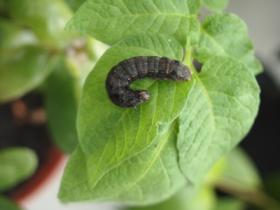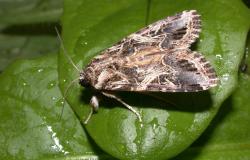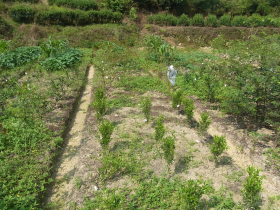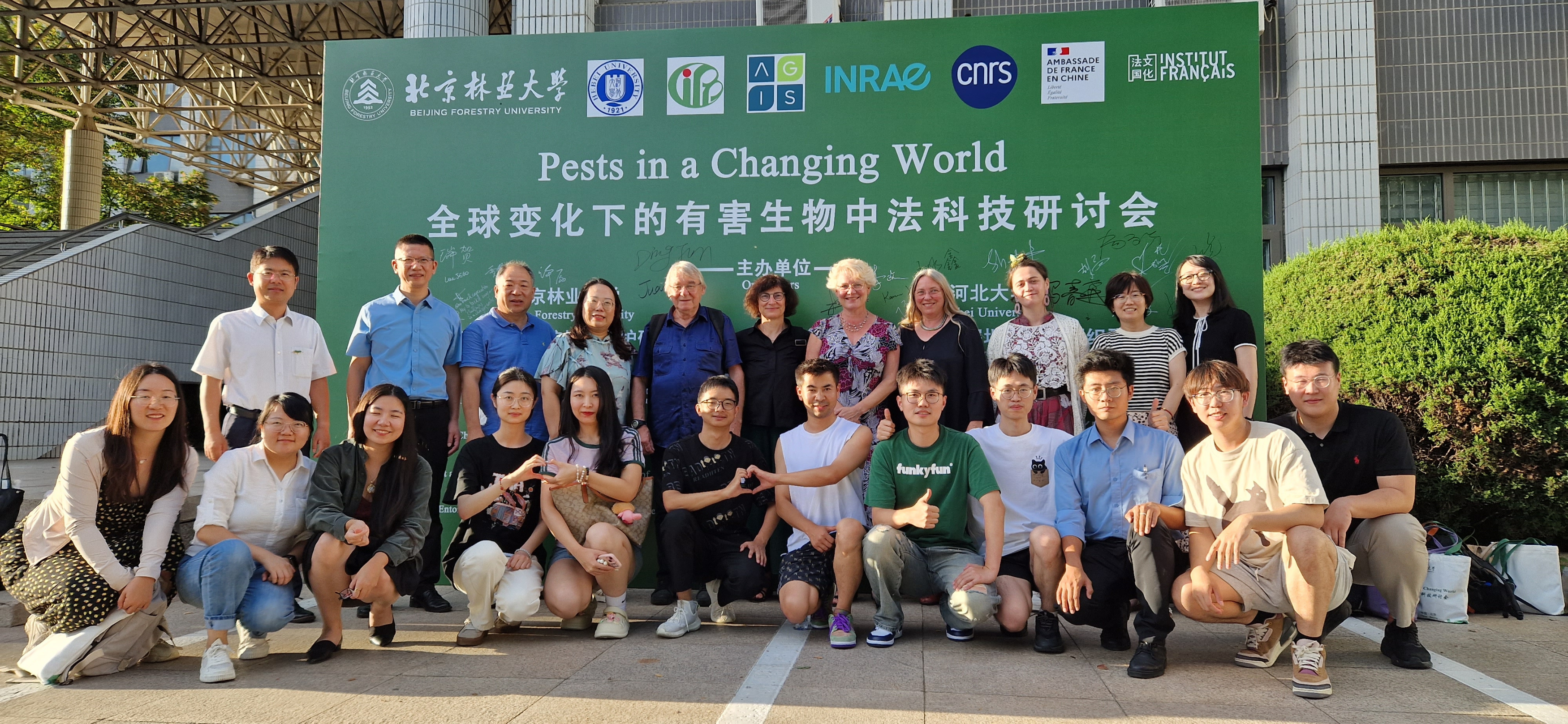Two French-Chinese joint laboratories dedicated to plant biosecurity
Published on 12 May 2025

For over ten years, INRAE has developed joint scientific programmes with its partners in China. Prominent among these are International Associated Laboratories (LIA), which bring together French and Chinese teams to work on well-defined common priorities such as the protection and preservation of soil, climate change and the management of invasive species.
With a dozen LIAs launched since 2013 in partnership with major research institutes, China is now INRAE’s largest partner in Asia. New strategic projects are broadening the scope of foundational research to include new forward-looking scientific fields, thus consolidating this trend as well as INRAE’s central role in international scientific cooperation.
Some of these laboratories operate in conjunction with already well-established programmes run by French and Chinese teams. One example is LIA BIPi (Bacteria-Insect-Plant interactions), launched in 2019 with the Institute of Plant Protection of the Chinese Academy of Agricultural Sciences (CAAS). This laboratory involves two INRAE units with the objective of better understanding interactions between insect pests, host plants and related bacteria and developing alternatives to phytosanitary products. “This LIA, focused on agroecology, is driven by a common concern for crop protection,” says Emmanuelle Jacquin-Joly, an INRAE Research Director and founder of the LIA.
Insects, plants, bacteria: improving understanding to improve protection

Teams in China and France conduct research in two main areas. The first looks at chemical mediators, the olfactory and taste signals shared between insects or with plants. Scientists are looking for ways to intercept this chemical communication and limit interaction that is harmful to agriculture. The second is the use of bacterial toxins as a biological pest control tool.
The endeavour has been successful: in five years, the BIPi laboratory has produced fifteen joint publications, several of which have appeared in leading international journals (eLife, Nature Communications, PNAS and the Annual Review of Entomology). One such article, published in eLife in 2019, revealed a novel lineage of candidate pheromone receptors for sex communication in moths, a discovery that “upsets the traditional hypothesis on how these olfactory receptors evolve in insects,” says Emmanuelle Jacquin-Joly. This receptor is also promising from a practical standpoint: “If we can inhibit or disrupt it, we can prevent contact between males and females and limit mating.”

Further reading
Biocontrol: tracing the evolution of a pest mothResearchers from INRAE, Sorbonne University and the Institute of Plant Protection in Beijing have retraced the evolutionary pathway of a key olfactory receptor in the cotton leafworm. Published in PNAS, the study opens new avenues for disrupting the reproductive cycle of this agricultural pest.
Currently under renewal, the LIA is expected to enter a new phase. “The first LIA focused on pest moths. The second will broaden its scope to include fruit flies, certain types of which have become a serious threat in Europe and France in particular,” says Emmanuelle Jacquin-Joly.
The project will also include new methodological approaches, including the AI-assisted modelling of olfactory receptors and virtual molecular screening. This research is conducted in cooperation with the Nice Institute of Chemistry (ICN) and the Agricultural Genomics Institute of the Chinese Academy of Agricultural Sciences at Shenzhen (AGIS-CAAS), a new partner of the LIA and leading centre of agricultural genomics. Researchers at AGIS-CAAS are among the few teams to have obtained a three-dimensional structure of an insect olfactory receptor.
This thrust depends on significant synergies between the French and Chinese teams. “Our Chinese partners have excellent sequencing and structural analysis facilities, which complement our expertise in physiology and receptor genetics,” points out the LIA founder.
An ambitious training component
Sixteen programmes have been organised since 2019, including short-term work placements, the supervision of four PhDs and several long-term work placements. The LIA also enabled the creation of a specific grant programme with the Chinese Scholarship Council (CSC), viewed in China as a seal of quality. “This scheme has allowed us to host several Chinese PhD students in our labs for one- to three-year programmes financed entirely by the CSC,” highlights Emmanuelle Jacquin-Joly. “The sharing of expertise, mobility for young researchers and co-construction fuels the energy and sustainability of this cooperation,” she adds.
Anticipating biological forest invasions
The IFOPE LIA explores the dynamics of invasion as it affects populations, forests and commercial trade, with the same objective: strengthen plant biosecurity using two complementary approaches applied at different scales.
IFOPE - for Invasive FOrest Pests affecting biodiversity and forest Ecosystems in Eurasia - was established in 2017 with Beijing Forestry University – China’s largest in the field. The international associated laboratory unites French and Chinese researchers with the objective of better understanding and anticipating biological invasion by forest pests. “This partnership is a game changer. We previously operated on the basis of short projects that were part of European research schemes. The LIA provides stability and a sustainable framework for our research,” says Alain Roques, Director of Research Emeritus at INRAE and founder of the LIA.
“Had we been able to observe the box tree moth in its native habitat back in the 2000s, we probably could have anticipated its introduction into Europe.”
The choice of Chinese locations is intentional: China is one of the biggest sources of invasive exotic species brought to Europe by the commercial trade of plants and wood products. “A good example are box tree moths, which ravage hedges throughout France. The insect was imported via plants. Had we been able to observe it in its local habitat in the 2000s, we probably could have anticipated its arrival in Europe,” he admits. This ties into a major difficulty that persists: many species that are problematic in Europe cause no visible damage in their area of origin. Identifying and studying them on site has become a research priority as a result.
Monitoring with sentinel plantations
With this in mind, LIA teams developed a new approach: sentinel plantations and nurseries. In the case of sentinel plantations, European forest species – oak, beech, fir – are planted in China and monitored to see which local insects colonise and develop in them. Oppositely, Chinese trees that are frequently exported to Europe are grown without phytosanitary protection to observe which insect species proliferate.

Sentinel nurseries involve planting and monitoring in China, without phytosanitary protection, the tree species most commonly exported to Europe. With this groundbreaking approach, scientists can simulate the dynamics of an invasion before it even occurs and generate predictive data that can be used for biosecurity services. Had it been implemented, this system would likely have detected foreseeable damage by the box tree moth before it arrived in Europe and led to the monitoring of imports.
Part of the research conducted involves detecting insects as soon as they arrive in import countries. INRAE teams developed a generic attractant mixture capable of luring a wide range of insects. This mixture is also used by the Chinese teams to build a common database offering tangible benefits: the system has been adopted by the French ministry of agriculture and the attractants are installed in every port in France.
The third pillar is based on genetic traceability. French doctoral students were sent throughout China to collect samples of invasive species already present in Europe. The researchers can retrace the invasion routes of certain Coleoptera, including those from the region of Shanghai.
“A longhorn beetle native to China, suspected of being able to attack grapevine in southern France, is currently bred in Beijing and tested under quarantine in Orléans thanks to the LIA.”
In return, several young Chinese scientists completed post-doctoral work or theses at the laboratory in Orléans to study European species that have become problematic in China. “Reciprocity works very well,” observes Alain Roques, “even with emerging species like Cerambycidae from China suspected of being able to attack grapevine in the south of France. Thanks to the LIA, the insect is bred in Beijing and its behaviour tested in quarantine conditions in Orléans.”
This research has already resulted in several breakthroughs. The LIA enabled the publication of the first list of exotic forest insect species found in China, an unprecedented tool to anticipate introduction. The findings of the attractant assessment were shared in 2023 in a joint publication that was key for both China and Europe. Since the laboratory’s creation, some 60 scientific articles have been published, ten of which as the direct result of the first agreement. One appeared in 2023 in the leading international journal in the field, the Annual Review of Entomology.
“We now aim to incorporate biological, commercial and climate-related factors into a single risk approach,” explains Alain Roques. For the period 2023–2027, the IFOPE II LIA will focus on three areas: analysing the commercial trade of plants and their role in introducing exotic species; modelling how invasions evolve under the effect of climate change and reconstructing the dynamics within invasive populations using genetic data.
A comparative look at invasive species
In September 2024, the heads of BIPi and IFOPE hosted a scientific conference in Beijing on pests and invasive species. The event brought together around 20 French and Chinese researchers. For the first time in China, INRAE’s international associated laboratories and an equivalent of the CNRS jointly addressed the challenge of anticipating emerging biological threats and building solutions.

This scientist-led cooperation paves the way for a new phase. Several projects set for completion in 2025 – the organisation of a France-China symposium, the development of new LIAs, partnerships with One Water Vision and other strategic initiatives as well as the expansion of joint doctoral programmes – are milestones on the path to an even more cross-cutting approach to cooperation.
9 active LIAs in key fields of research
INRAE currently has nine international associated laboratories (LIA) with Chinese partners, focused on four major scientific priorities. A project on plant phenomics is in its final stages of completion and a second project, on the circular economy of agricultural and agri-food waste, is in development.
Four of these LIAs (marked with an asterisk) are part of the Franco-Chinese Carbon Neutrality Centre.
1. Agroecology, sustainable soil management and ecosystems
- A-AGD* (under renewal): agroecology, sustainable agricultural practices and multi-scale modelling.
INRAE-China Agricultural University (CAU, Pékin) - ECOLAND-II* (renewed in 2023): ecosystems, ecosystem services and soil remediation.
INRAE-Université de Lorraine-Sun Yat sen University (Canton, Guangdong)
2. Varietal innovation and adaptation to climate change
- INNOGRAPE-II (renewed in 2024): Improving grapevine against climate change.
INRAE-université Bordeaux-Bordeaux Sciences Agro-Chinese Academy of Sciences (Beijing) - WHEAT WGP-II (under renewal): genetic selection of wheat and adaptation to environmental stress.
INRAE-Université Clermont Auvergne-Chinese Academy of Agricultural Science (Pékin) - PLANTOMIX-II * (renewed in 2024): functional diversity and resilience in varietal combinations.
INRAE-Yunnan Agricultural University (Kunming, Yunnan) - HORTILAB (new for 2024–2029): horticulture, reproduction and genetic improvement.
INRAE-Paris-Saclay-Huazhong Agricultural University (Wuhan)
3. Food, food structuring, nutrition and health
- FOODPRINT-II (renewed in 2025): bioavailability of nutrients and interface phenomena.
INRAE-Agrocampus Ouest-Soochow University (Suzhou, Jiangsu)
4. Biological protection and ecosystem health
- BIPi-II (under renewal): bacteria-insect-plant interaction in biocontrol.
INRAE-IPP CAAS (Pékin)-Agricultural Genomics Institute (Shenzhen) - IFOPE-II * (renewed in 2024): biological forest insect invasions and monitoring strategies.
INRAE-Beijing Forestry University (Pékin)
